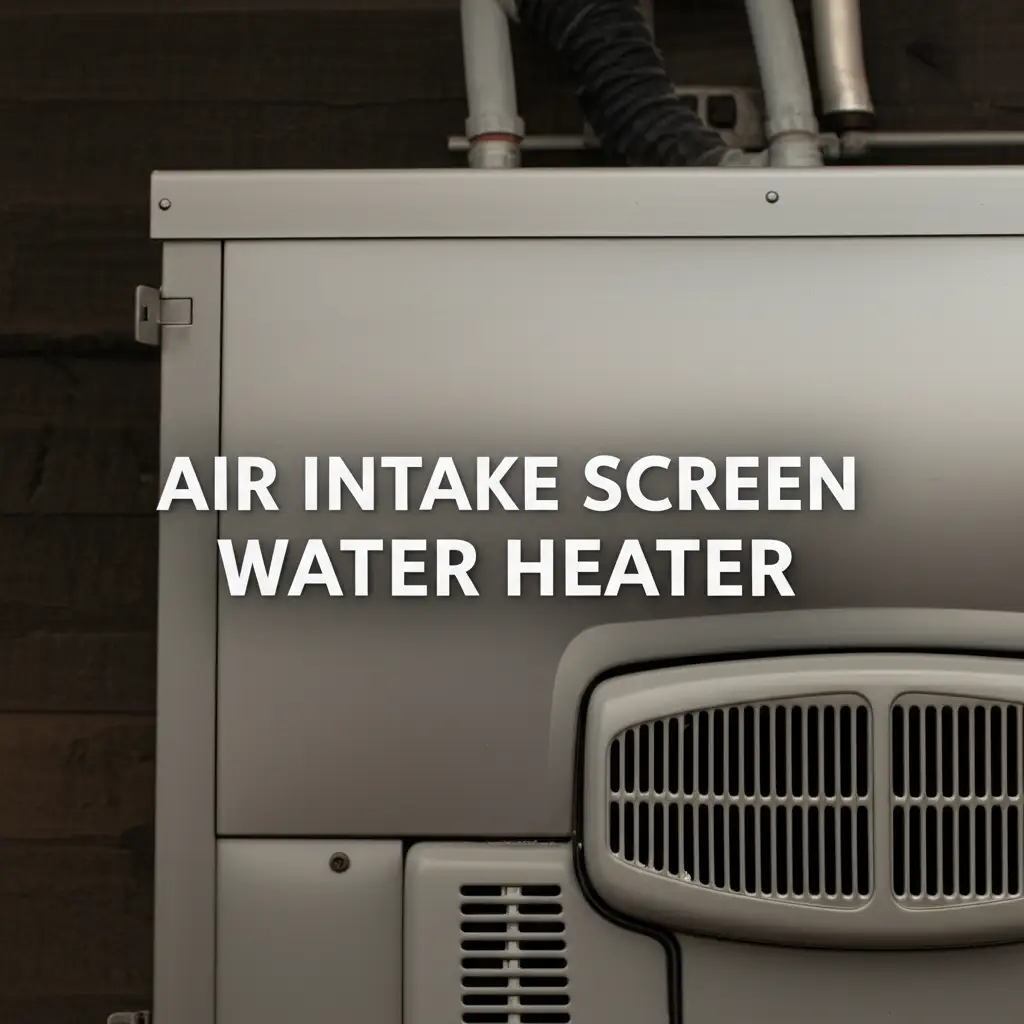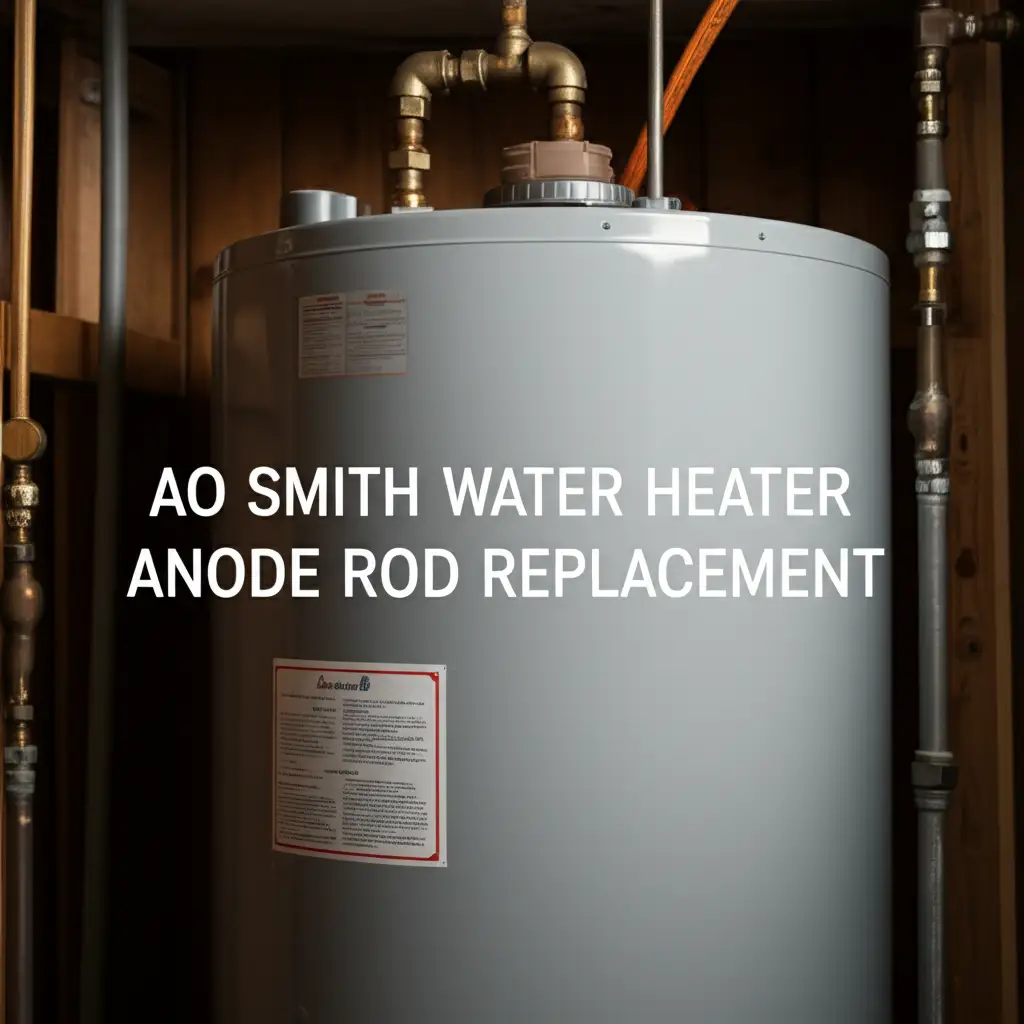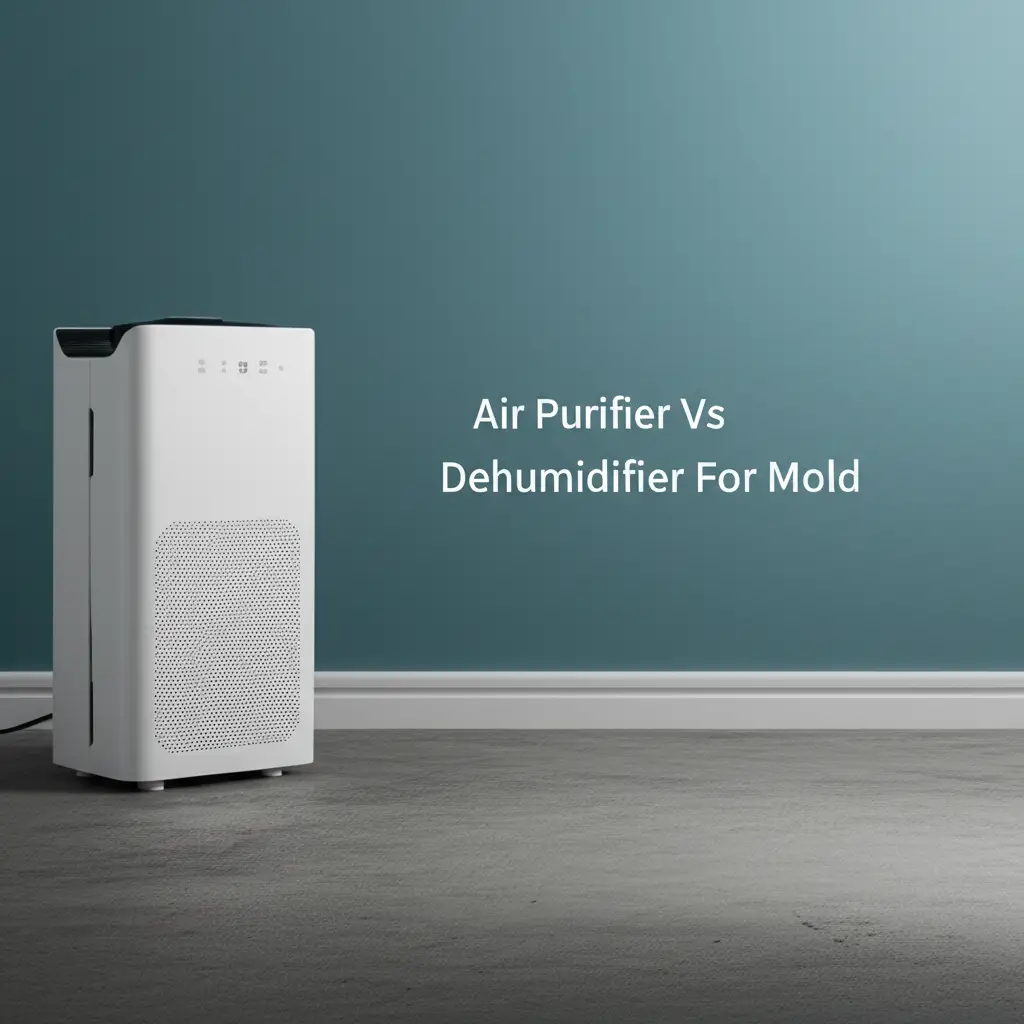· Elira Thomsen · Home Maintenance · 17 min read
Air Intake Screen Water Heater

Air Intake Screen Water Heater: Essential Care for Your Appliance
Imagine stepping into a cold shower when you expect warm water. This frustrating experience often points to a problem with your water heater. Many homeowners overlook a small, yet critical, component: the air intake screen water heater. This screen plays a central role in your unit’s performance and safety. Maintaining it properly prevents many common issues.
In this article, we will explore the air intake screen’s function and its importance. We will cover how a clean screen ensures peak water heater efficiency and helps avoid problems. You will learn common symptoms of a clogged screen and receive a step-by-step cleaning guide. We will also discuss routine maintenance and troubleshooting tips. My goal is to help you keep your hot water flowing reliably.
Takeaway
- The air intake screen provides essential combustion air for your water heater.
- A clean screen ensures safe and efficient water heater operation.
- Regular cleaning prevents common problems like pilot light outages and reduced hot water.
- Neglecting the screen can lead to higher energy bills and safety risks.
The air intake screen on a water heater is a safety feature and functional component. It allows clean air to enter the combustion chamber. This screen blocks dust and debris from reaching the burner, ensuring proper fuel ignition and preventing potential hazards.
Understanding the Air Intake Screen in Your Water Heater
You rely on your water heater every day for hot water. Inside this appliance, a precise process takes place to heat your water. For gas water heaters, this process involves combustion. The air intake screen water heater is a key part of this system. It ensures the appliance gets the air it needs.
This screen is typically located near the bottom of your gas water heater. It might look like a mesh or grill. Its design allows airflow while stopping larger particles. Different models might have variations in screen design. Knowing where to find it is the first step in proper maintenance.
Purpose of the Screen
The main purpose of the air intake screen is simple: it ensures a steady supply of clean air. Gas water heaters need oxygen for the flame that heats the water. This air, called “combustion air,” must be free of large dust or lint. If debris enters the combustion chamber, it can clog the burner. This causes many problems, including incomplete combustion or the pilot light going out.
The screen also acts as a basic safety barrier. It prevents items like pet hair or stray insulation from reaching the flame. This reduces the risk of fire hazards. Think of it as your water heater’s first line of defense. A clean screen means safer, more reliable operation.
Types of Water Heater Intake Systems
Water heaters use different intake systems. Older models might have a more open intake. Newer, high-efficiency models often feature sealed combustion systems. These systems draw air from outside your home through a dedicated pipe. This helps improve energy efficiency and safety.
Even with sealed systems, a filter or screen is usually present. It still aims to keep the intake clear. For atmospheric vent models, the air intake screen is even more critical. These units draw air from the immediate surroundings. This makes them more susceptible to dust and lint buildup. Checking your specific water heater manual helps you understand its exact system.
Why Your Water Heater Air Intake Screen Matters for Performance
A tiny mesh screen might seem insignificant. However, the air intake screen water heater plays a crucial role in your appliance’s performance. Its proper function directly impacts how well your water heater heats water. It also affects how much energy it uses. A clean screen means a happy water heater.
When the screen is clear, air flows freely to the burner. This allows the gas to burn efficiently. An efficient burn produces maximum heat with minimal wasted fuel. This saves you money on energy bills. It also ensures you always have enough hot water for your needs.
Preventing Combustion Problems
A dirty air intake screen chokes off the air supply to the burner. Imagine trying to run a race while holding your breath. Your water heater experiences something similar. Without enough oxygen, the gas cannot burn completely. This leads to incomplete combustion.
Incomplete combustion has several negative consequences. It produces soot, which can further clog the burner. It also creates more carbon monoxide (CO), a dangerous, odorless gas. A properly functioning screen helps ensure clean and safe combustion. This protects your home and family. Preventing these problems starts with simple maintenance.
Enhancing Energy Efficiency
Your water heater is one of the biggest energy users in your home. Keeping it running efficiently is important for your budget. The air intake screen directly impacts this efficiency. When the screen is clogged, the burner struggles to get enough air. This means it has to work harder to heat the water.
This increased effort translates directly to higher energy consumption. Your water heater uses more gas to achieve the same result. Over time, these extra costs add up significantly. A clean air intake screen allows the burner to operate at its optimal efficiency. This reduces your energy use and keeps your utility bills lower. Regular maintenance of the screen is a simple way to save money.
Common Issues Related to a Clogged Air Intake Screen
Ignoring the air intake screen water heater can lead to various problems. These issues range from minor inconveniences to serious safety concerns. Recognizing the symptoms early helps you address them quickly. Many common water heater complaints can be traced back to a dirty intake screen.
The most noticeable problem is a lack of hot water. If your hot water supply seems inconsistent or runs out too fast, check the screen. Other signs include unusual noises coming from the unit. These could be popping or rumbling sounds. Understanding these symptoms helps you pinpoint the problem.
Pilot Light Extinction
One of the most frequent symptoms of a clogged air intake screen is a pilot light that keeps going out. The pilot light is a small flame that ignites the main burner. If it does not get enough oxygen, it cannot stay lit. Dust and lint buildup on the screen restrict this vital airflow.
When the pilot light goes out, your water heater stops heating water. This often happens unexpectedly. You might relight it, only for it to extinguish again shortly after. This cycle of relighting is frustrating and indicates a lack of proper combustion air. Before calling a professional, inspect the air intake screen. It is a common fix for this issue.
Reduced Hot Water Output
Another sign of a problem is a noticeable drop in hot water availability. Your water heater might produce less hot water than usual. Or, the water might not get as hot as it should. A dirty screen reduces the burner’s efficiency. The flame might be weaker or less consistent.
This results in the water heater taking longer to heat water. Sometimes, it might not reach the set temperature at all. You might find yourself running out of hot water during showers. This problem is directly linked to the burner’s ability to operate properly. A clogged air intake screen prevents the burner from heating water effectively.
Unusual Noises and Smells
Your water heater should operate quietly. If you hear new or strange noises, investigate them. A clogged air intake screen can cause rumbling or popping sounds. These noises come from the combustion chamber. They indicate incomplete combustion or a struggling burner.
You might also notice unusual smells. A faint gas smell could mean incomplete combustion. This is a serious safety concern. If you smell strong gas, leave your home immediately and call your gas company. For other smells, like burning dust, check the screen. These issues highlight the importance of the air intake screen water heater for safe operation. For broader home air quality, ensure you also know how to clean air vents throughout your home.
Step-by-Step Guide to Cleaning Your Water Heater Air Intake Screen
Cleaning the air intake screen water heater is a straightforward maintenance task. You do not need special tools or extensive plumbing knowledge. However, safety is paramount when working with gas appliances. Always follow the steps carefully. This simple cleaning can prevent many costly repairs.
I recommend setting aside about 30 minutes for this task. The specific location of your screen might vary slightly by model. Consult your water heater’s owner’s manual if you are unsure. Most manuals provide diagrams. Gather your tools before you begin.
Safety First: Preparing for Cleaning
Before you touch your water heater, safety comes first. You are working with gas and potentially hot water.
- Turn off the Gas Supply: Locate the gas shut-off valve on the gas line leading to your water heater. Turn the handle to the “OFF” position. This stops gas flow to the unit.
- Turn off Electrical Power (if applicable): Some water heaters have electronic ignition or power vents. If yours does, turn off the electrical breaker that supplies power to the water heater.
- Allow Cooling: If your water heater has been running, allow it to cool down. The burner area can be very hot. Give it at least 20-30 minutes to cool.
- Gather Tools: You will need a soft brush (like a toothbrush or paint brush), a vacuum cleaner with a hose attachment, and possibly a flathead screwdriver or nut driver for removing any access panels.
Never attempt to clean the screen while the gas or power is on. This prevents accidental ignition or electrical shock. Your safety is worth the extra few minutes of preparation.
The Cleaning Process
Once your water heater is safely off and cool, you can begin cleaning the screen.
- Locate the Air Intake Screen: For most atmospheric vent gas water heaters, the screen is at the bottom of the unit. It is usually behind a small removable panel or a mesh cover. You might need to gently pull or unscrew a cover to access it.
- Inspect the Screen: Look at the screen. You will likely see dust, lint, pet hair, and other debris clinging to it. The amount of buildup indicates how often it needs cleaning.
- Vacuum Loose Debris: Use your vacuum cleaner’s hose attachment to gently suck away loose dust and lint. Be careful not to press too hard or damage the screen.
- Brush Away Stubborn Grime: For more stubborn dirt, use your soft brush to gently scrub the mesh. Brush away from the unit to avoid pushing debris inside. You can also use the vacuum simultaneously to capture dislodged particles. Do not use water or harsh chemicals.
- Check for Damage: As you clean, inspect the screen for any tears, holes, or damage. A damaged screen might need replacement.
Take your time with this step. A thorough cleaning ensures proper airflow. This helps your water heater run efficiently.
Post-Cleaning Checks
After cleaning the air intake screen water heater, you need to restore your unit to operation.
- Reassemble Components: Replace any access panels or covers you removed. Ensure they are secure.
- Restore Gas and Power: Turn the gas supply back on by rotating the valve handle to the “ON” position. If you turned off electrical power, restore it at the breaker.
- Relight the Pilot Light: Follow your water heater’s instructions for relighting the pilot light. This procedure is usually detailed on a label on the unit itself or in your owner’s manual.
- Monitor Operation: Listen for the main burner to ignite. Observe the flame if possible; it should be blue and steady. Allow the unit to run for a while. Check for consistent hot water production.
If the pilot light still goes out, or the problem persists, the issue might be deeper. It could indicate a faulty thermocouple or a more complex burner issue. In such cases, professional help is recommended.
Routine Maintenance for Your Water Heater’s Air Flow
Cleaning the air intake screen water heater should be part of your regular home maintenance routine. It is a simple task that offers big benefits. Consistent maintenance extends the life of your appliance. It also ensures it runs safely and efficiently. My experience tells me that small, consistent actions prevent big, costly problems.
Beyond just the screen, consider the overall environment around your water heater. Proper ventilation and a clean space contribute to optimal airflow. This holistic approach to maintenance helps your appliance serve you well for years. Regular checks can catch minor issues before they become major headaches.
Recommended Cleaning Frequency
How often should you clean your water heater’s air intake screen? The answer depends on several factors:
- Household Dust Levels: Homes with more dust, pet hair, or lint (e.g., near a laundry area) will need more frequent cleaning.
- Appliance Location: Water heaters in basements or utility closets might gather more dust than those in cleaner environments.
- Pilot Light Issues: If your pilot light frequently goes out, it is a clear sign to clean the screen immediately.
As a general guideline, I recommend checking the air intake screen every 3-6 months. A full cleaning might only be necessary once or twice a year. However, a quick visual inspection every few months ensures you catch buildup early. If you notice significant dust, clean it. This proactive approach saves you hassle.
Beyond the Screen: Holistic Airflow Checks
Maintaining optimal airflow for your water heater goes beyond just the air intake screen. Consider these additional checks:
- Ventilation Clearance: Ensure there is ample space around your water heater. Do not store items directly against it. Obstructions can block airflow to the intake.
- Exhaust Venting: For gas water heaters, check the exhaust flue pipe. Ensure it is not blocked or damaged. The flue carries combustion byproducts, including carbon monoxide, out of your home. A blocked flue is a serious safety hazard.
- Overall Cleanliness: Keep the area around your water heater clean. Regularly sweep or vacuum the floor to reduce airborne dust and lint. This lowers the amount of debris that can reach the air intake screen. A clean environment means less work for your water heater.
Thinking about the whole system helps maintain efficiency. Just like you might clean an RV’s freshwater tank for better water quality, keeping your water heater’s surroundings clean improves its air quality. You can find more tips on general cleaning and maintenance, such as how to clean fresh water tank in RV, for various home systems.
Troubleshooting Water Heater Air Intake Problems
Even with regular cleaning, sometimes problems persist. If you have cleaned the air intake screen water heater and your unit still shows symptoms, further troubleshooting is necessary. Do not get discouraged; some issues require a deeper look. My approach is always to start with the simplest solution and move to more complex ones.
Knowing when to call a professional is key. Attempting repairs beyond your skill level can be dangerous. It might also cause more damage. This section helps you determine your next steps.
When Cleaning Is Not Enough
If cleaning the air intake screen does not resolve your water heater’s issues, consider these possibilities:
- Faulty Thermocouple: The thermocouple is a safety device that senses if the pilot light is lit. If it fails, it will shut off the gas supply, even if the pilot light is fine. A weak pilot flame due to a dirty screen can damage it over time.
- Blocked Burner Assembly: Despite the screen, some dust or debris might have entered and clogged the burner ports. This requires careful cleaning, often involving disassembling parts of the burner.
- Gas Pressure Issues: Insufficient gas pressure can cause a weak flame or pilot light issues. This is a problem for your gas utility or a licensed plumber to address.
- Ventilation Problems: The exhaust flue might be blocked, creating a backdraft that starves the burner of oxygen. Check for obstructions in the vent pipe.
These problems require more than a simple cleaning. They often involve working with gas lines or internal components. Always exercise extreme caution.
Professional Assistance
There are clear instances when you should call a qualified professional:
- Persistent Pilot Light Issues: If the pilot light repeatedly goes out after cleaning, or you cannot relight it.
- Gas Smells: Any persistent smell of gas warrants immediate professional attention. Leave your home and call your gas company.
- Error Codes: Newer water heaters display error codes on a digital screen. These codes indicate specific internal faults. Consult your manual for their meaning, but often they point to issues needing professional repair.
- No Hot Water After Troubleshooting: If you have tried all basic troubleshooting steps and still have no hot water.
- Uncertainty or Discomfort: If you feel unsure or uncomfortable performing any diagnostic or repair steps, call a professional. Your safety and the proper function of your appliance are paramount.
Professionals have the tools and expertise to diagnose and fix complex water heater problems safely. They can also perform routine maintenance tasks like flushing the tank or checking the anode rod. While some appliances, like a dishwasher, might have their own heating elements, understanding the full scope of your home’s water heating is important. For example, do dishwashers have water heaters is a common question, but their systems are distinct from your main water heater.
FAQ Section
Q1: How often should I clean my water heater’s air intake screen? I recommend checking the air intake screen every three to six months. You should thoroughly clean it at least once or twice a year. If your home has pets, or if the water heater is in a dusty area, more frequent checks and cleanings might be needed to maintain optimal performance.
Q2: What happens if the air intake screen is completely blocked? If the air intake screen is completely blocked, your water heater will likely stop working. The burner will not receive enough oxygen. This causes the pilot light to go out or the main burner to fail. It prevents your water heater from producing hot water efficiently or at all.
Q3: Can a dirty air intake screen be dangerous? Yes, a dirty air intake screen can be dangerous. It can lead to incomplete combustion, which produces carbon monoxide (CO). CO is an odorless, colorless gas that is highly toxic. It also increases the risk of fire due to excessive lint buildup around the burner area.
Q4: Do all water heaters have an air intake screen? Most gas water heaters have some form of air intake screen or filter. It is essential for combustion air supply. Electric water heaters do not have an air intake screen because they do not use combustion. Always check your specific water heater model’s manual.
Q5: Can I replace the air intake screen myself? Replacing the air intake screen is possible if it is damaged. You can often order a replacement part from the manufacturer. The replacement process is similar to cleaning. However, ensure you use the exact part for your model. If unsure, consult a professional.
Q6: What tools do I need to clean the screen? To clean the air intake screen, you will need a few basic tools. These include a vacuum cleaner with a hose attachment to remove loose debris. A soft brush, like a toothbrush or a small paint brush, helps clean stubborn dirt. You might also need a flathead screwdriver or nut driver to remove an access panel.
Conclusion
Taking care of your air intake screen water heater is a simple yet vital task. This small component plays a huge role in your water heater’s efficiency, safety, and longevity. Ignoring it can lead to frequent breakdowns, higher energy bills, and potential safety hazards. My advice is always to prioritize preventative maintenance.
By regularly inspecting and cleaning the air intake screen, you ensure your water heater receives proper airflow. This allows for complete combustion, leading to consistent hot water and lower operating costs. You now have the knowledge to troubleshoot common issues and perform this important maintenance step yourself.
Do not wait for your hot water to disappear. Make checking your water heater’s air intake screen a routine part of your home maintenance schedule. A few minutes of effort can save you from inconvenient cold showers and expensive repairs. Keep your hot water flowing reliably by giving your water heater the care it deserves.
- air intake screen
- water heater maintenance
- gas water heater
- home appliance care
- cleaning water heater
- pilot light issues
- energy efficiency





